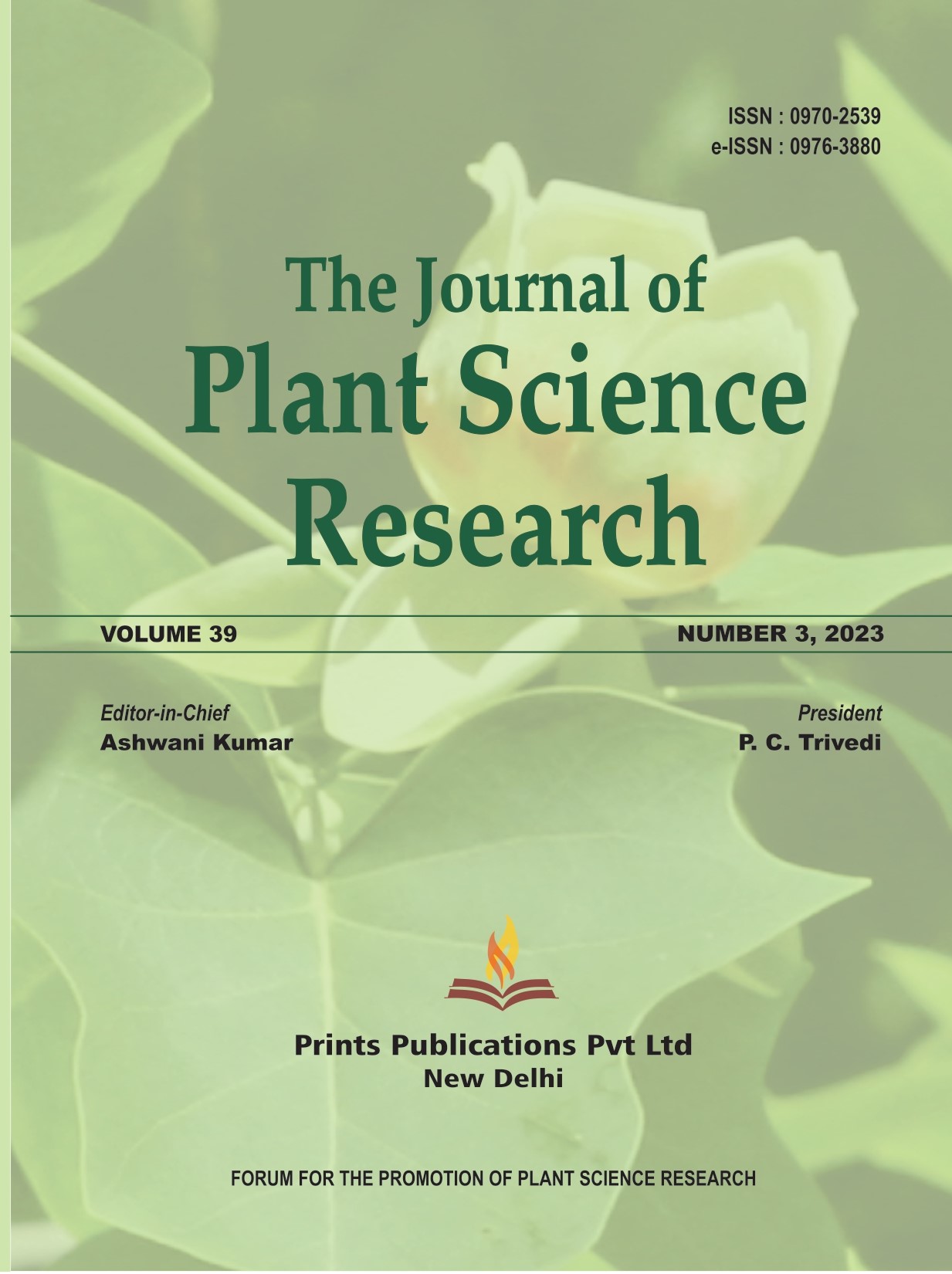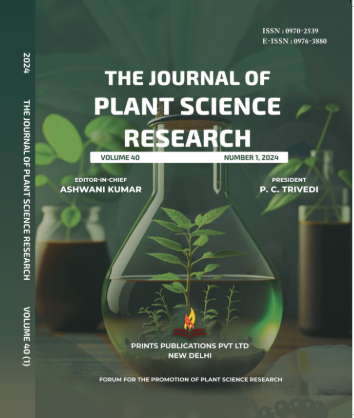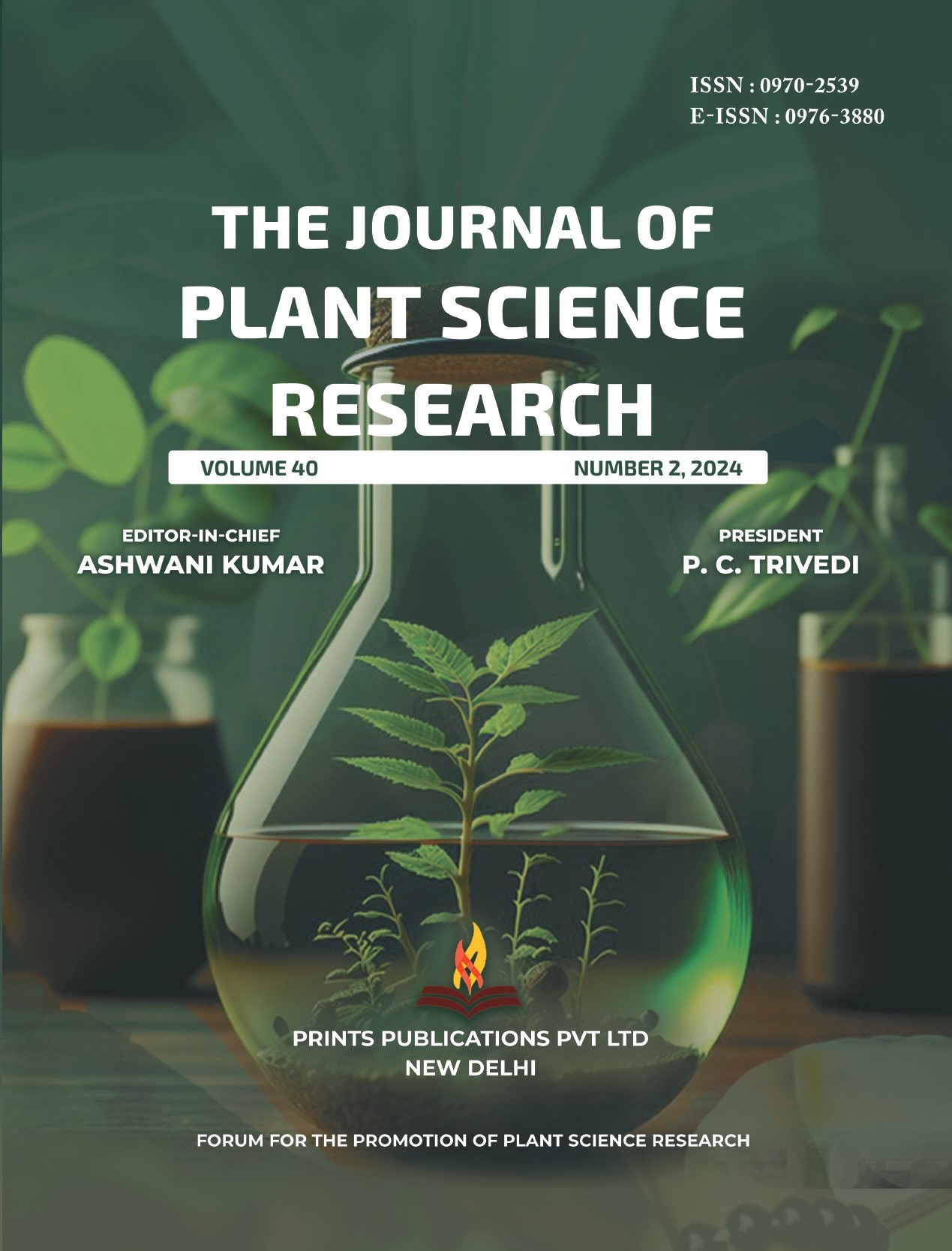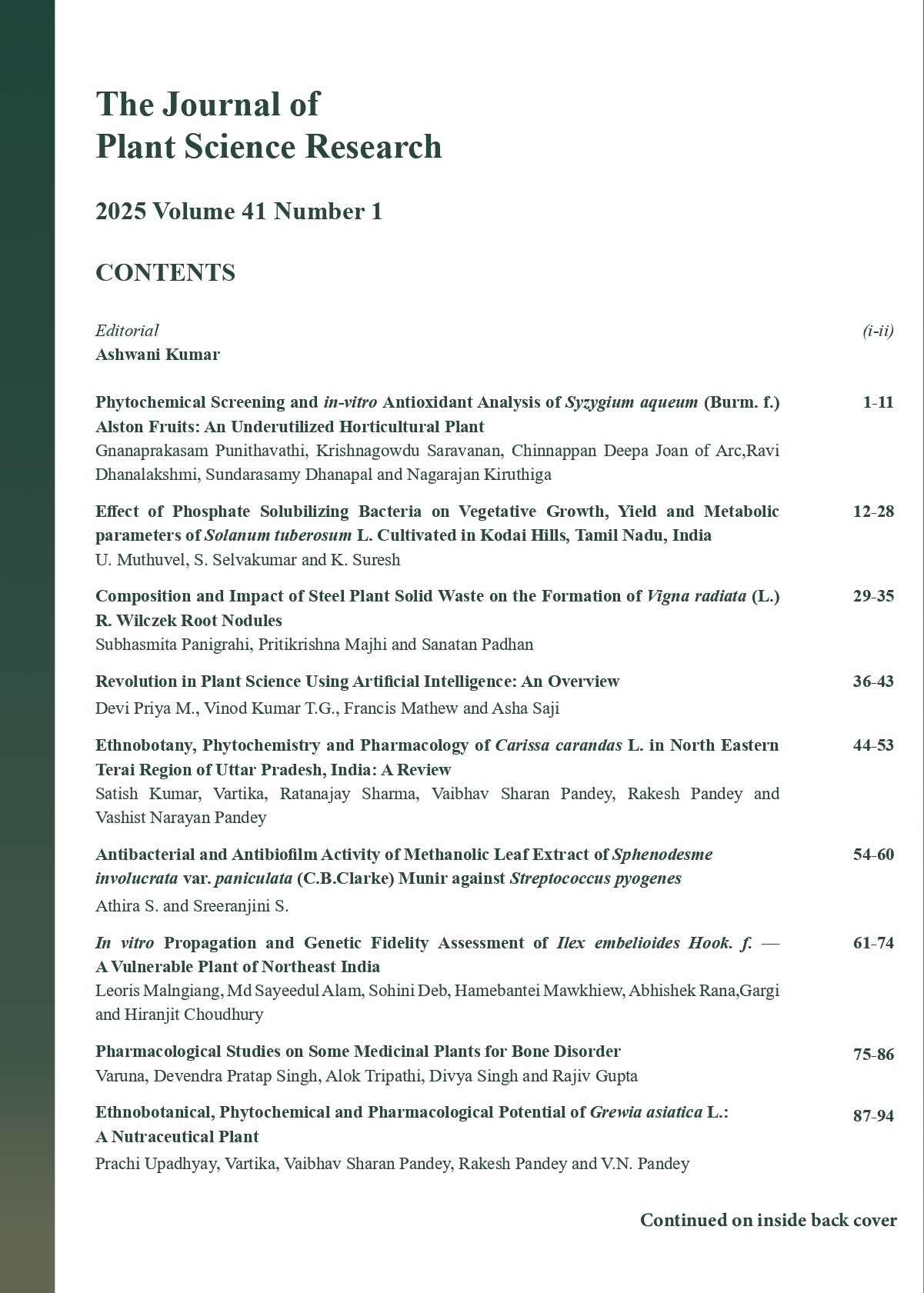The Journal of Plant Science Research - A UGC Care-Listed Journal
Published in Association with Forum For the Promotion of Plant Science Research
Current Volume: 41 (2025 )
ISSN: 0970-2539
e-ISSN: 0976-3880
Periodicity: Tri-annual
Month(s) of Publication: April, August & December
Subject: Botany
DOI: 10.32381/JPSR
Online Access is Free for Life Member
Changes in Floral Diversity due to Livelihood Pressures in the Eco-sensitive Zone of Nongkhyllem Wildlife Sanctuary in Ri Bhoi District of Meghalaya
By : Thoudam James Singh, Subhasish Das Gupta
Page No: 75-82
Abstract
The challenges in the management of diverse flora impacted by anthropogenic factors in areas governed by different land tenure systems are enormous notwithstanding lying in a classified biodiversity hot spot region in Meghalaya in North- east India. The attributes of the plant population in protected areas like Nongkhyllem Wildlife Sanctuary (NWLS), Nongkhyllem Forest (NRF), and District Council governed Eco-sensitive zone (ESZ) were studied using Important Value Index (IVI), Shannon’s and Weiner Diversity Index and Sorenson’s similarity index. Shorea robusta C.F.Gaertn., Tectona grandis Linn. L.f., Schima wallichii (D.C.) Korth, had the highest IVI value of 64, 56, 42, etc. respectively, while the diversity index showed maximum values of 0.78 in recorded forest area and minimum of 0.60 under district council area. Similarity index ranged between 16.67 % and 39.22 %. The species richness and diversity in the recorded forest area was higher compared to the forest under the district council. In addition, tree girth and density of other species were determined. The study revealed that the cultivation of betel nut (Areca catechu L.), betel leaf (Piper betle L.), broom (Thysanolaena maxima Kuntze) and banana (Musa spp.) though for livelihood and income generation contributed to vegetation alteration in the district council forest area. Strict enforcement of ESZ laws & creating alternative livelihood opportunities can help minimize biodiversity loss.
Authors :
Thoudam James Singh and Subhasish Das Gupta
Department of Environment & Traditional Ecosystems, Martin Luther Christian University, Shillong, Meghalaya, India.
DOI: https://doi.org/10.32381/JPSR.2023.39.01.8






